How to properly clean and cut catfish
A large number of different dishes can be prepared from catfish meat: cutlets, pies, pies, baked fish and even kebabs. But in order for them to be tasty and aromatic, you need to know how to clean catfish correctly.
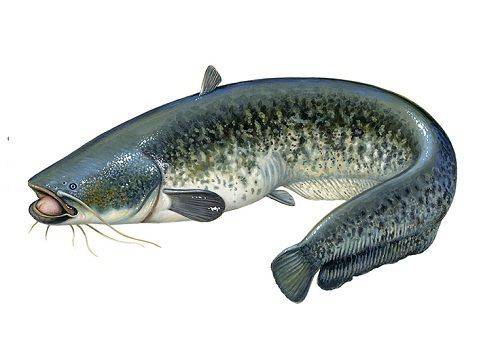
Outlandish fish - catfish
Catfish live in almost all major rivers of Russia. They are nocturnal. During the day, catfish lie in deep pools on the muddy bottom of reservoirs, buried in the mud. This is a truly huge fish that can reach 5 meters in length and weigh up to 3 quintals. But such giants are rare, and getting such a trophy out of the water is very problematic. For cooking, much smaller specimens are used - up to 20 kg. Properly cooked young catfish meat is very tasty.
In addition, this fish has absolutely no scales, which means that the kitchen will remain clean during its processing. Another significant advantage of catfish is that catfish do not have small bones in the muscles and tail - only spinal bones and ribs.
How to clean catfish before cooking
There are no scales on the skin of catfish, but it is abundantly covered with mucus, which has an unpleasant smell of mud. If you don’t get rid of it, you can seriously spoil the prepared dish. But in general, cleaning catfish is not difficult.
- First, the fish should be sprinkled with coarse salt (or rolled in it).
- Rub with an old sponge or napkin (you can just use a gloved hand).
- Using the blunt side of a knife, carefully scrape off the salt and mucus from the skin. We must try to make the skin a light shade.
- Rinse the fish well.
- If the mucus is not completely cleared, you need to repeat all the steps again.
- How to clean fish in “camping” conditions: use wood ash instead of salt.
The skin of this fish is strong, so you can safely clean it without fear of damaging it.
Catfish do not have sharp spines on the dorsal and pelvic fins, like perch or pike perch, but there are sharp spines on the front fins (near the gills) that can cause injury. Such punctures are very painful. Therefore, you should be careful while working, or, first of all, remove the fins by cutting them off with kitchen scissors or a knife.
Gutting
After you have finished cleaning the catfish, you can begin gutting. For this:
- Place the fish on its back and make a shallow puncture near the head so as not to damage the insides. Insert the tip of the knife into the hole with the blade up and, slightly pulling the peritoneum with it, cut the belly from the head to the anus.
- Open the incision and carefully remove the entrails without tearing them away from the head, being careful not to crush the gall bladder - bile that gets on the meat will make it bitter.
- Trim the gills and pull them out along with the entrails.
- The inner walls of the belly must be thoroughly cleaned of films.
- Make cuts on both sides along the fins, then pull them out by hand or with pliers, starting from the tail to the head.
- If caviar is found during gutting, it must be carefully removed and then cleaned of the film. This is easy to do with a regular fork. Salted or fried catfish caviar is a real delicacy.
If bile gets on the meat, most often the pieces are cut out and thrown away. Should not be doing that. The bile should be washed off or wiped with a napkin, and the place where it got in should be rubbed with salt.After a couple of minutes, wash off the salt and you can safely send these pieces to cooking.
How to separate the pulp
If necessary, separate the fillet from the bones. To do this, you first need to cut off the head. Then the fish should be laid on its side. From the tail, along the back, make a shallow cut, placing the knife blade parallel to the tabletop, trying to make it go along the spinal bones. Then, pulling the edge of the pulp along the cut, use the tip of a knife to deepen the cut to the rib bones.
Turning the blade along the ribs, carefully remove the flesh from the front of the carcass, without cutting off from the tail. Lifting the cut part of the fillet, position the knife parallel to the spinal bones and, moving along the spine, cut the fillet from the tail. Turn the carcass over and remove the fillet from the other side.
There is no need to throw away the head and bones; they can be used to prepare broth or for boiling when preparing double fish soup.
Removing the skin
To prepare minced meat or shish kebab, the skin is not needed, which means it can be removed. It is more convenient to do this from a whole catfish carcass, rather than from a removed fillet.
- The fish must first be washed, gutted and fins removed.
- After this, with a sharp knife you need to make a circular incision in the skin across the body behind the gills and another one in the middle of the back along the body.
- Grab the edge of the skin near the head with pliers and pull towards the tail, trimming with a knife if necessary.
- Having removed the skin from one side of the carcass, remove it from the other in the same way.
You can cut the carcass into portions or remove fillets.
It is the skin that has a strong smell of mud, so removing it from the carcass can almost completely get rid of this smell.
It will be much easier to remove the skin from the fish if you hang it by the gills.
How to get rid of a specific odor
Catfish is not always cooked because of the specific smell of mud that its meat has. Moreover, the larger and older the fish, the more sensitive this smell is. You can significantly reduce the unpleasant aroma by removing the skin from the catfish. To get rid of it completely, before cooking, pour lemon juice or dry white wine over the meat, let sit for 15-20 minutes, then rinse.
You can soak the somyatina in milk for 2-3 hours. This will not only remove the smell, but also make the meat tastier. During cooking, it would be a good idea to generously season the catfish with spices, including allspice and black pepper.
This fish is very good when smoked, and it doesn’t matter whether it’s cold or hot smoked. It makes excellent barbecue steaks and even shish kebab.
From properly cleaned and processed catfish meat, you can prepare many different dishes that will not leave anyone indifferent.
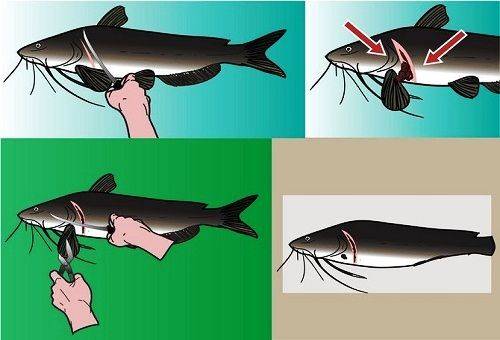
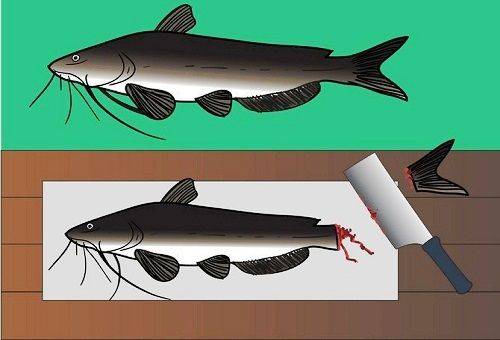

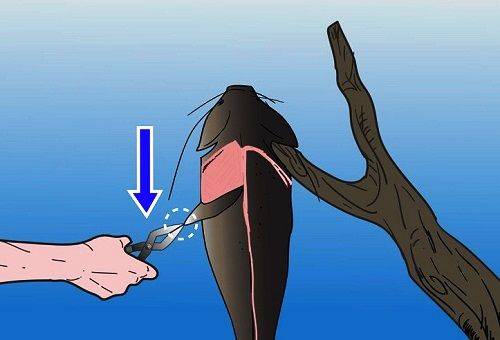
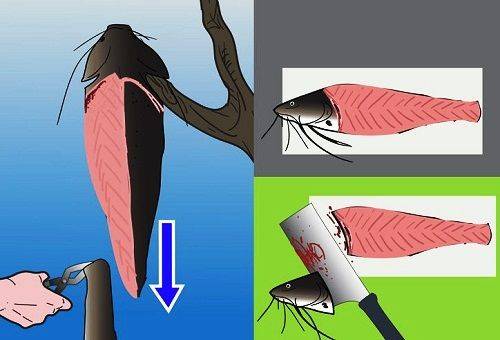
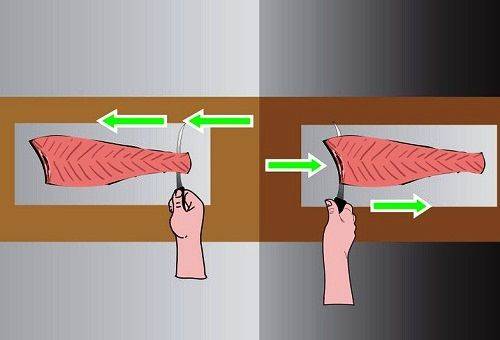
A great way to remove the skin is to grab it with pliers.It was so slippery that it kept slipping out of my hand and I couldn’t grab it properly to pull it. It's much easier with pliers.